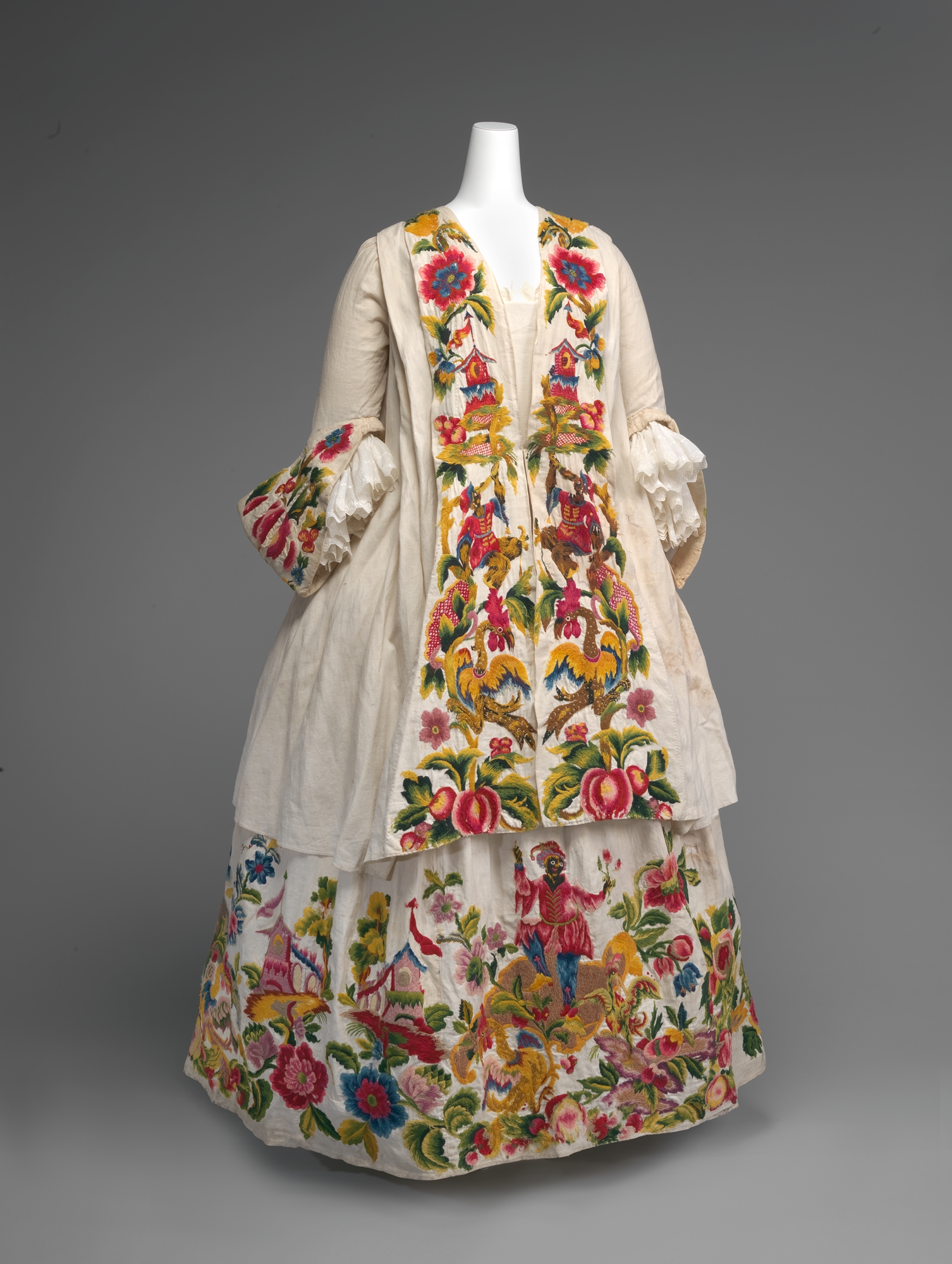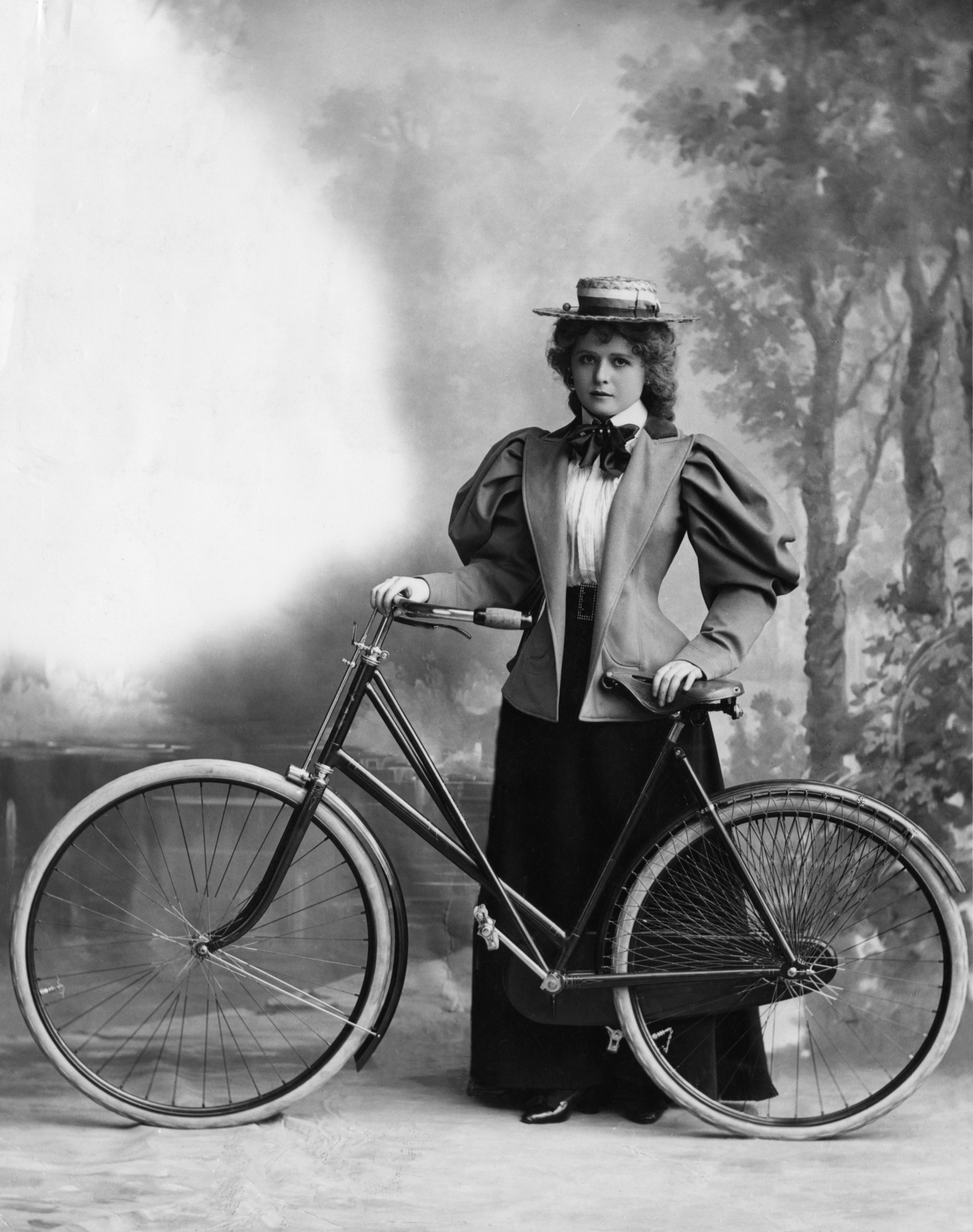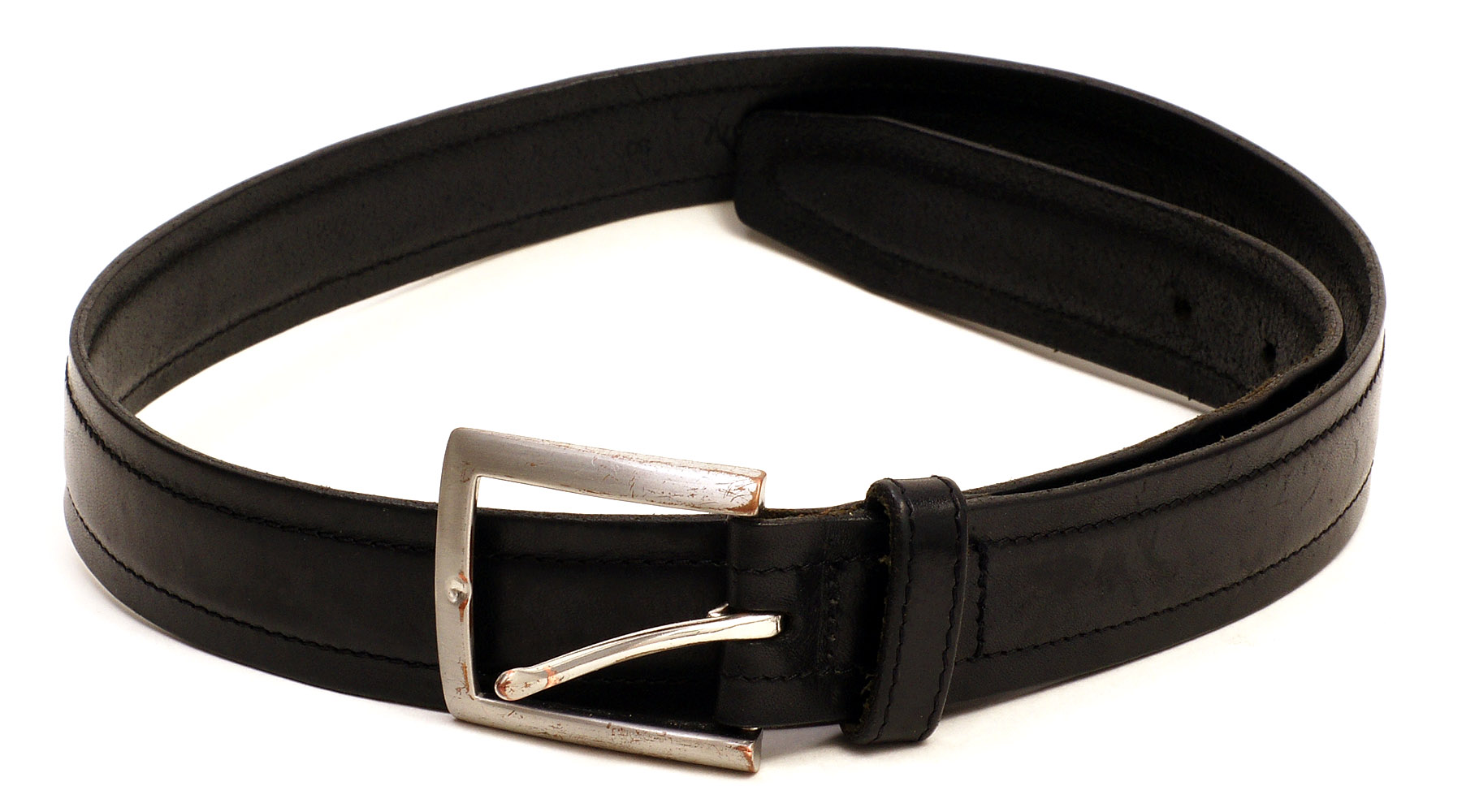|
Overskirt
An overskirt is a type of women's short skirt which is draped over another garment, such as a skirt, breeches, or trousers. Although peplum is often used as another term for overskirt, it should not be confused with the ''peplos'' or "peplum dress", which was worn in ancient Greece. The design of the overskirt depended on the era in which it appeared, and a variety of overskirts have appeared through history: *Casaquin—Popularly known from the 1740s onwards as a ''pet-en-l'air'', this was a short version of the sack-back gown (also known as the ''robe à la française'') which appeared in the 1780s. *Greatcoat dress—Despite the name, this garment mimicked the men's greatcoat. It was essentially an ankle-length robe worn over a skirt. The robe could be buttoned from collar to hem, with the overskirt of the robe completely covering the petticoat. More often, the robe was left unbuttoned below the waist and the overskirt allowed to fall away on either side to reveal the petticoat ... [...More Info...] [...Related Items...] OR: [Wikipedia] [Google] [Baidu] |
Polonaise (clothing)
The ''robe à la polonaise'' or ''polonaise'' is a woman's garment of the later 1770s and 1780s or a similar revival style of the 1870s inspired by Polish national costume, consisting of a gown with a cutaway, draped and swagged overskirt, worn over an underskirt or petticoat. From the late 19th century, the term ''polonaise'' also described a fitted overdress which extended into long panels over the underskirt, but was not necessarily draped or swagged. Origin and structure As early as the 1720s, English painters had begun to portray fashionable ladies dressed in romanticized versions of the costume of a century earlier, as depicted in portraits by van Dyck and Rubens, while French Queen Marie Leszczyńska made the Polish dress popular in that decade. By the 1770s, elements of this style began to appear in fashionable dress, including the wide-brimmed hat (dubbed the "Rubens hat" in the ''Fashionable Magazine'' of 1786) and bunched-up skirts. About the same time, French fas ... [...More Info...] [...Related Items...] OR: [Wikipedia] [Google] [Baidu] |
Mantua (clothing)
A mantua (from the French or "mantle") is an article of women's clothing worn in the late 17th century and 18th century. Originally a loose gown, the later mantua was an overgown or robe typically worn over stays, stomacher and a co-ordinating petticoat. The mantua or was a new fashion that arose in the 1670s. Instead of a bodice and skirt cut separately, the mantua hung from the shoulders to the floor (in the manner of dresses of earlier periods) started off as the female version of the men's banyan, worn for 'undress' wear. Gradually it developed into a draped and pleated dress and eventually evolved into a dress worn looped and draped up over a contrasting petticoat and a stomacher. The mantua-and-stomacher resulted in a high, square neckline in contrast to the broad, off-the-shoulder neckline previously in fashion. The new look was both more modest and covered-up than previous fashions and decidedly fussy, with bows, frills, ribbons, and other trim, but the short string of p ... [...More Info...] [...Related Items...] OR: [Wikipedia] [Google] [Baidu] |
Train (clothing)
In clothing, a train describes the long back portion of a robe, coat, cloak, skirt, overskirt, or dress that trails behind the wearer. It is a common part of ceremonial robes in academic dress, court dress or court uniform. It is also a common part of a woman's formal evening gowns or wedding dresses. Types of train Fashion * Court train – Worn for formal court occasions, the court train had to fall in with strict dress codes which differed from court to court. For example, the French court code set in 1804 by Jean-Baptiste Isabey prescribed a four-inch maximum width for embroidered train borders for non-Royal wearers. In Britain it was required to be three yards in length at the minimum.''Dress and Insignia Worn at His Majesty's Court''. Various editions 1898-1937 * Double train – Two trains attached to the same dress, or a single train divided into two trains. * Fishtail train – A train popular at various times from the 1870s onwards, flaring out from midway down a ... [...More Info...] [...Related Items...] OR: [Wikipedia] [Google] [Baidu] |
Skirt
A skirt is the lower part of a dress or a separate outer garment that covers a person from the waist downwards. At its simplest, a skirt can be a draped garment made out of a single piece of fabric (such as pareos). However, most skirts are fitted to the body at the waist or hips and fuller below, with the fullness introduced by means of darts, gores, pleats, or panels. Modern skirts are usually made of light to mid-weight fabrics, such as denim, jersey, worsted, or poplin. Skirts of thin or clingy fabrics are often worn with slips to make the material of the skirt drape better and for modesty. In modern times, skirts are very commonly worn by women and girls. Some exceptions include the izaar, worn by many Muslim cultures, and the kilt, a traditional men's garment in Scotland, Ireland, and sometimes England. Fashion designers such as Jean Paul Gaultier, Vivienne Westwood, Kenzo and Marc Jacobs have also shown men's skirts. Transgressing social codes, Gaultier f ... [...More Info...] [...Related Items...] OR: [Wikipedia] [Google] [Baidu] |
Breeches
Breeches ( ) are an article of clothing covering the body from the waist down, with separate coverings for each leg, usually stopping just below the knee, though in some cases reaching to the ankles. Formerly a standard item of Western men's clothing, they had fallen out of use by the mid-19th century in favour of trousers. Modern athletic garments used for English riding and fencing, although called ''breeches'' or ''britches'', differ from breeches. Etymology ''Breeches'' is a double plural known since c. 1205, from Old English , the plural of "garment for the legs and trunk", from the Indo-European root *bhrg- "break", here apparently used in the sense "divide", "separate", as in Scottish Gaelic briogais ("trousers"), in Breton bragoù ("pants"), in Irish bríste ("trousers") and brycan/brogau in Welsh. Cognate with the Proto-Germanic word ''*brōk-'', plural ''*brōkiz'', itself most likely from the Proto-Indo-European root; whence also the Old Norse word , which s ... [...More Info...] [...Related Items...] OR: [Wikipedia] [Google] [Baidu] |
Bustle
A bustle is a padded undergarment used to add fullness, or support the drapery, at the back of women's dresses in the mid-to-late 19th century. Bustles are worn under the skirt in the back, just below the waist, to keep the skirt from dragging. Heavy fabric tended to pull the back of a skirt down and flatten it. As a result a woman's petticoated skirt would lose its shape during everyday wear (from merely sitting down or moving about). History In the early stages of the fashion for the bustle, the fullness to the back of the skirts was carried quite low and often fanned out to create a train. The transition from the voluminous crinoline-enhanced skirts of the 1850s and 1860s can be seen in the loops and gathers of fabric and trimmings worn during this period. The bustle later evolved into a much more pronounced humped shape on the back of the skirt immediately below the waist, with the fabric of the skirts falling quite sharply to the floor, changing the shape of the silhouet ... [...More Info...] [...Related Items...] OR: [Wikipedia] [Google] [Baidu] |
Casaquin
A casaquin is a short-length closely fitted coat worn by middle- and upper-class women during the 18th century. The garment was popular in both France and Italy. A casaquin was made from linen which was then covered by embroidery, silk and lace to decorate. The design was influenced by religious beliefs or events as well as reflecting on stylistic features of the time or of individual designers. Casaquins were worn by a range of females - from working-class women (for practical purposes) to upper-class ladies (for social or ceremonious occasions). The casaquin even influenced women from the Netherlands during the 18th century to introduce their own version of a casaquin called a "Kassekijntje". Construction A Casaquin was constructed from a petticoat bodice made from linen decorated with silk, lace and embroidery. A Casaquin was created and designed by a couturiere meaning a female designer of high fashion customised garments for a private client. A Casaquin had the design and f ... [...More Info...] [...Related Items...] OR: [Wikipedia] [Google] [Baidu] |
Sack-back Gown
__NOTOC__ The sack-back gown or ''robe à la française'' was a women's fashion of 18th century Europe. At the beginning of the century, the sack-back gown was a very informal style of dress. At its most informal, it was unfitted both front and back and called a sacque, contouche, or ''robe battante''. By the 1770s the sack-back gown was second only to court dress in its formality. This style of gown had fabric at the back arranged in box pleats which fell loose from the shoulder to the floor with a slight train. In front, the gown was open, showing off a decorative stomacher and petticoat. It would have been worn with a wide square hoop or panniers under the petticoat. Scalloped ruffles often trimmed elbow-length sleeves, which were worn with separate frills called engageantes. The casaquin (popularly known from the 1740s onwards as a pet-en-l'air) was an abbreviated version of the robe à la française worn as a jacket for informal wear with a matching or contrasting pettico ... [...More Info...] [...Related Items...] OR: [Wikipedia] [Google] [Baidu] |
Pannier (clothing)
Panniers or side hoops are women's undergarments worn in the 17th and 18th centuries to extend the width of the skirts at the side while leaving the front and back relatively flat. This provided a panel where woven patterns, elaborate decorations and rich embroidery could be displayed and fully appreciated. History The style originated in Spanish court dress of the 17th century, familiar in portraits by Velázquez. The fashion spread to France and from there to the rest of Europe after c. 1718–1719, when some Spanish dresses had been displayed in Paris. It is also suggested that the pannier originated in Germany or England, having been around since 1710 in England, and appearing in the French court in the last years of Louis XIV’s reign. The earlier form of the pannier took the shape similar to a 19th-century crinoline. They were wide and domed in circumference. As they developed, they differed from earlier equivalents such as the farthingale of the late 16th century, by ... [...More Info...] [...Related Items...] OR: [Wikipedia] [Google] [Baidu] |
Sleeve
A sleeve ( ang, slīef, a word allied to '' slip'', cf. Dutch ) is the part of a garment that covers the arm, or through which the arm passes or slips. The sleeve is a characteristic of fashion seen in almost every country and time period, across a myriad of styles of dress. Styles vary from close-fitting to the arm, to relatively unfitted and wide sleeves, some with extremely wide cuffs. Long, hanging sleeves have been used variously as a type of pocket, from which the phrase "to have up one's sleeve" (to have something concealed ready to produce) comes. There are many other proverbial and metaphorical expressions associated with the sleeve, such as "to wear one's heart upon one's sleeve", and "to laugh in one's sleeve". Early Western medieval sleeves were cut straight, and underarm triangle-shaped gussets were used to provide ease of movement. In the 14th century, the rounded sleeve cap was invented, allowing a more fitted sleeve to be inserted, with ease around the sleeve ... [...More Info...] [...Related Items...] OR: [Wikipedia] [Google] [Baidu] |
Belt (clothing)
A belt is a flexible band or strap, typically made of leather, plastic, or heavy cloth, worn around the natural waist or near it (as far down as the hips). The ends of a belt are free; and a buckle forms the belt into a loop by securing one end to another part of the belt, at or near the other end. Often, the resulting loop is smaller than the hips. Belts come in many lengths because of the variety in waist sizes, and most belts can be adjusted at the buckle to suit the wearer's waist. Description Belts are used variously to secure or hold up clothing, such as trousers, shorts, and skirts; to carry objects, such as tools and weapons; and to define or accentuate the waist. Some garments have a series of belt loops at the waist, through which a belt can be threaded. Additionally, many belts have a "keeper loop" affixed to one end, near the buckle. The keeper loop stops the free end of the belt from flapping around once the belt is buckled. Some belts also have an end tip (ma ... [...More Info...] [...Related Items...] OR: [Wikipedia] [Google] [Baidu] |
Gown
A gown, from the Saxon word, ''gunna'', is a usually loose outer garment from knee-to-full-length worn by men and women in Europe from the Early Middle Ages to the 17th century, and continuing today in certain professions; later, the term ''gown'' was applied to any full-length woman's garment consisting of a bodice and an attached skirt. A long, loosely fitted gown called a Banyan was worn by men in the 18th century as an informal coat. The gowns worn today by academics, judges, and some clergy derive directly from the everyday garments worn by their medieval predecessors, formalized into a uniform in the course of the 16th and 17th centuries. Terminology A modern-day gown refers to several types of garments. It can refer to a woman's dress, especially a formal or fancy dress. It may also refer to a nightgown or a dressing gown. In academia, and other traditional areas such as the legal world, gowns are also worn on various formal or ceremonial occasions. History The ' ... [...More Info...] [...Related Items...] OR: [Wikipedia] [Google] [Baidu] |



.jpg)







